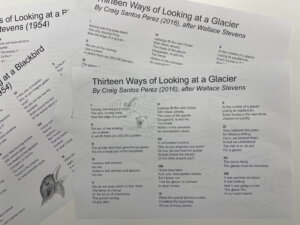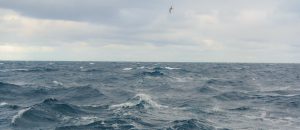
A “Poetry for Sustainability” lunch
Today, we tried a new format of our “Transformation Thursdays” (come-as-you-are informal lunch meetings where colleagues who are interested in Teaching for Sustainability can join me and Terese to chat…


